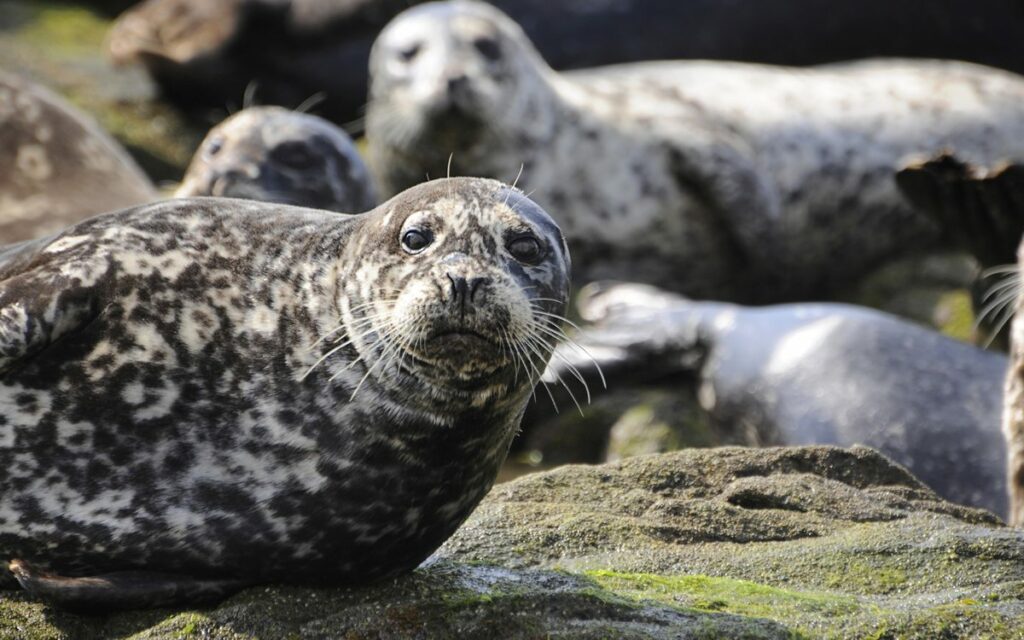Harbour seal
The harbor (or harbour) seal (Phoca vitulina), also known as the common seal, is a true seal found along temperate and Arctic marine coastlines of the Northern Hemisphere.

Harbour Seal
Latin name: Phoca vitulina
Other common name: Common seal
Distinctive features: May be grey, tan, brown and/or black, usually with spots.
Size: Bulls are 1.4-1.9 m long and up to 170 kg; cows are slightly smaller at 1.2-1.7 m and 105 kg. Pups weigh 8-12 kg at birth.
Longevity: 30–35 years for cows and 20–25 years for bulls.
Diet: A diverse diet, according to location and availability, that may include hake, menhaden, herring, anchovy, sea bass, sandlance, flounder, herring, cod, whiting, sole, shrimp, octopus, mullosks, squid, brook trout and salmon.
Population: The global population is estimated at some 650,000 harbour seals.
Predators: Killer whales, great white and Greenland sharks, sea lions, walrus; eagles, gulls, and ravens target pups.
IUCN Status: Least concern; population trend: unknown.
COSEWIC Status: Not at risk; Lacs des Loups Marins population endangered.
Range
Five subspecies of harbour seal—Eastern Pacific harbour seal, Western Pacific harbour seal, Western Atlantic harbour seal, Eastern Atlantic harbour seal, and the Ungava seal—combine to make it the most widely distributed seal species, though they are only found north of the Equator. In Canada, they are found along virtually all coastlines (Pacific, Arctic, and Atlantic).
Harbour seals will haul out or breed on everything from rocky to sandy terrain; they are a coastal species but have been known to spend time in rivers and ponds. The Ungava sub-species stays in fresh water.
Life Cycle
Cows become sexually mature at 3 to 5 years and bulls at 4 to 6 years. The timing of the birthing season will depend on location/latitude; ranges from March to September. Birthing of pups happens on shore. Pups are weaned in three to four weeks but, unlike many other species, mothers will leave the pups for up to three days at a time to travel to the sea to feed.